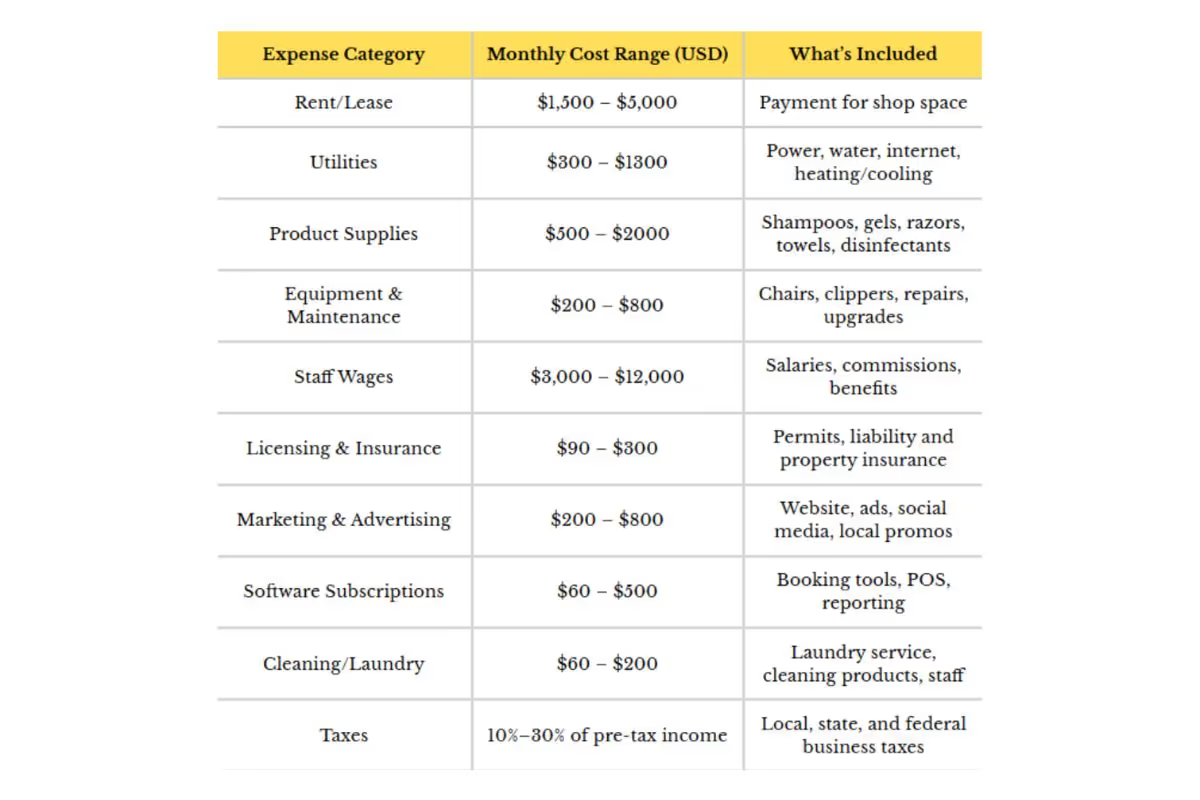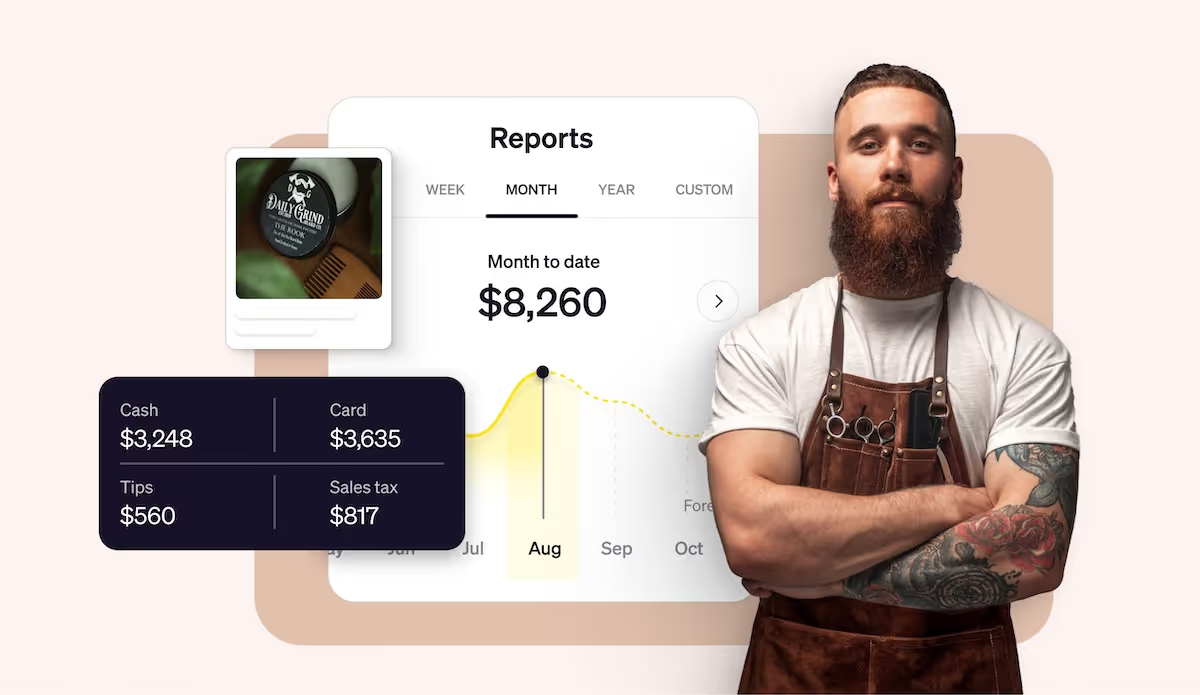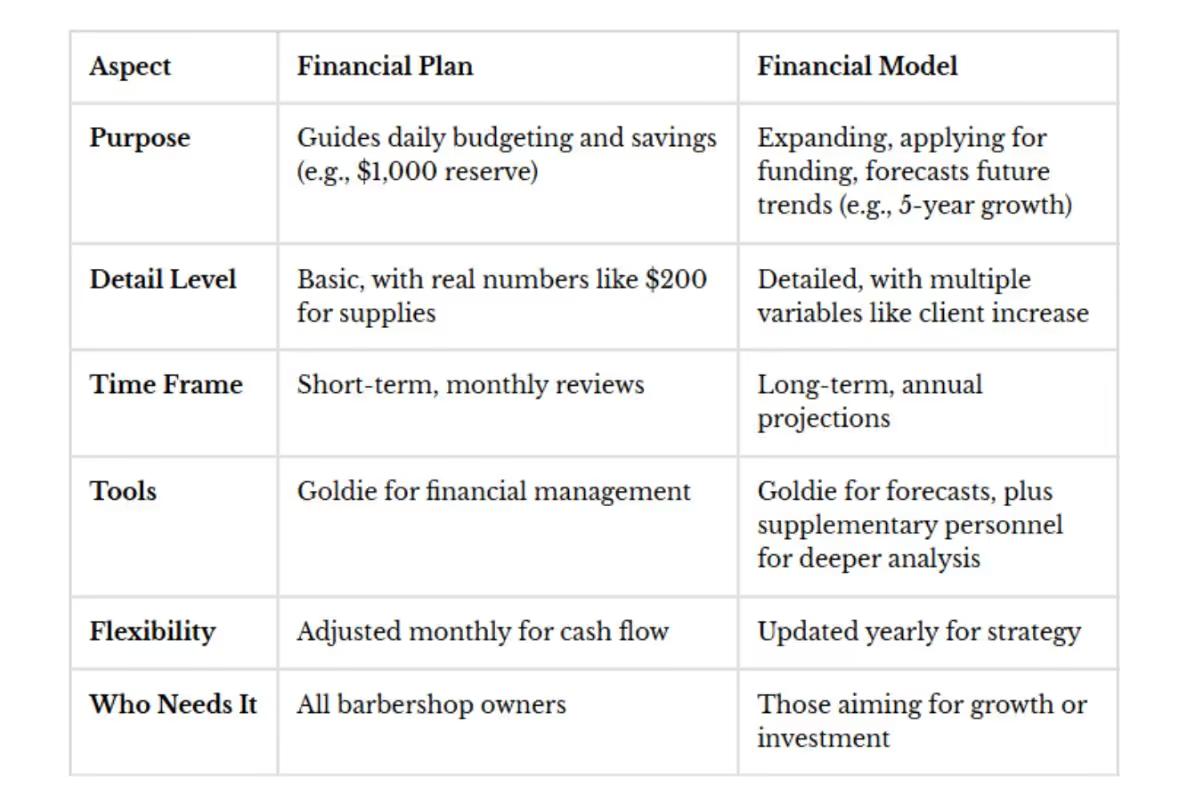
With more than 110,000 barbershops across the US generating $5.8 billion this year, the industry is more competitive than ever. As a barbershop owner, you are already aware that providing excellent haircuts is just one part of the job. Managing your barbershop finances it’s about creating a strong foundation so your business can reach its full potential and stay successful for years to come.
Even if you have regulars and plenty of hard work, you might still wonder where all your profit is going or how to get your business to grow even more. That is why understanding your numbers, budgeting, tracking expenses, and planning ahead can make all the difference.
Check out these simple ways to manage your barbershop's expenses without stress. From building a realistic budget to using tools that help you in making smart decisions, you'll find what you need to set your business for growth and less concern.
Managing your barbershop finances is more important than you might think. If you watch your income and expenses, you'll know where your money is going. Then you can find places to save or put money into growing your business. A good barbershop financial management means fewer unexpected problems, less stress, and feeling better about the choices you make every day.
Good financial habits can keep you from spending too much, help you get ready for slow periods, and let you make smart choices on things like upgrades or adding new services.
If you already own a barbershop or work in the industry, you certainly know how much it costs to run a barbershop, but knowing where your money goes each month is super important to keep your business profitable. All shops have costs that come up regularly, whether big or small, and they can add up quickly. Here's a breakdown of the usual monthly costs and what each one usually includes:

So, according to Dojo Business, typical monthly costs are somewhere between $6,000 and $10,000. Of course, that number can change based on where you're located, how big business is, and or if how many people you employ. Your real costs could be more or less, but keeping an eye on these numbers is a good way to manage your barbershop expenses, prepare for any unexpected costs, and just make informed business decisions all year long.
Is your barbershop's financial situation a bit of a mess? Managing your shop's funds starts with getting your bookkeeping in order and understanding the basics of how business finances work, just like the U.S. Small Business Administration recommends. Let's go over some simple steps to help your shop thrive!
Keep your personal money apart from your shop's funds. When choosing a bank, look for one with low fees. Bank of America, for example, has a Business Advantage Fundamentals account. It has a $16 monthly fee, but you can skip it if you keep a $5,000 balance or spend $500 each month on your debit card. They also have the Business Advantage Relationship account. It has a $29.95 monthly fee, which is waived if you keep a $15,000 balance. Keeping your barbershop's money apart from your personal funds can really help with managing your finances.

Goldie’s platform makes it easy to generate financial reports for your records and tax preparation, helping you keep up with your cash flow. Besides finances, Goldie also offers online booking, automatic appointment reminders, client management, calendar syncing, payment processing, expense tracking, marketing tools, and even protection if your clients don't show up. It's all designed to save you time and keep your barbershop running smoothly.
Record your daily barbershop expenses.For example, put down things like $50 for clipper blades, $8 for client coffee, $12 for new towels, $6 for cleaning spray, and $15 for hair products. Find a reliable tool to manage your barbershop expenses effectively. Try to make it a habit to spend 15 minutes each day to record your expenses so your finances are always up to date.
For example, aim to make $3,000 from cutting hair and $500 from selling products, but try not to spend more than $1,500. Breaking down your income and costs beforehand, it’s simpler to see where you can save or invest. For extra help, you should use Goldie’s Salon Service Price Calculator to quickly see if your prices and sales goals will pay all the bills.
Put aside 25-30% of your earnings for taxes. For example, if you make $3,000, save $750 each quarter to pay your federal and state taxes. As an independent barber or business owner, expect to pay around 15.3% of what you earn in self-employment tax for Social Security and Medicare. You'll also have to pay your regular federal income tax, which is usually between 10% and 22% for many small business owners. Just a heads up, if you think you'll owe over $1,000 in taxes for the year, you'll need to make estimated tax payments every quarter to avoid issues.
Check your Goldie reports every Sunday to adjust spending, with a 10% profit margin as your goal. Take a look at simple, everyday costs such as beverages, cleaning supplies, promotional materials, or even hair products. If you're a solo business owner, you can adjust these costs easily depending on how much you're actually using.

Aim to save money by negotiating 10-15% off big orders from suppliers like Sally Beauty. But before stocking up, check whether you have enough space and will use everything before it goes bad. Lots of business owners mess up by ordering too much, running out of important things, or dealing with leaky bottles and sudden supply issues. Keeping a close eye on your product use and quality helps you save money and avoid waste.
Try putting aside $2,000 during your busy months, like summer. Barbershops usually have slow periods from January to March because people often delay appointments after the holidays. Things usually pick up in April and May. Then, it slows down in the summer since many customers are on vacation or just enjoying the outdoors. Things start to get busy again in September and October with back-to-school routines, and the busiest period arrives from late November through December as clients book appointments ahead of the holidays and family get-togethers.
Having a good accountant can really take the stress out of dealing with taxes, payroll, and keeping your books in order. Usually, you can expect to pay somewhere between $150 and $400 an hour for their help. For small business owners who have a CPA do their yearly taxes, it usually costs about $1,000 to $1,500 each year.
Ever wondered what a financial plan is and how it can set your shop up for success? Think of it as a simple guide on how to manage barbershop finances. It helps you predict your income, controlling costs, and prepare for the unexpected. Start by figuring out what you might earn, such as $4,200 from 120 haircuts at $35 each. Then, plan for what you'll spend, like $800 for new clippers and $250 for local ads. Doing this can really help you keep your barbershop's finances in good shape, without making things too complicated.
A simple plan has four key elements that keep things simple and effective:
Building this plan takes anywhere from a few hours or up to a full day, but it pays off with a clearer picture of your finances. Using Goldie’s financial reports and expense tracking saves time and ties these pieces together, letting you check and adjust your plan every month based on client trends. Start making your plan today, and you’ll gain the confidence to grow your shop steadily!
Financial terms can be confusing, especially since people mix up “financial plan” and “financial model” all the time. If you own a barbershop, knowing the difference can help you manage and grow your business without worry.
A financial plan is your guide for how to handle money every day. It helps you figure out how much money you're making, keep track of where it's all going, get ready for tax season, and set aside savings for surprise expenses. Basically, it's your shop's budget, whether you're looking at it monthly or yearly, and it's there to keep your business on track.
A financial model goes beyond basic calculations. It helps you explore different scenarios, estimate future growth, figure out when you begin to generate revenue, and even support your case if you want a loan or attract investors. Thinking about hiring someone at the barbershop, adding a new service, or raising prices? A financial model will show you what those moves could mean for your business in the years to come.
Let's make this easier to understand with a simple comparison, so you can figure out the best plan for your shop!

By understanding which plan fits your current needs, you set your barbershop up for steady progress and long-term success.
Managing your barbershop finances doesn't have to be a headache. If you stay organized, track your expenses, and make informed decisions, you’re setting your business up for steady growth and long-term success. Remember, keeping your cash flow on track means always having enough money to pay your bills, cover expenses, and invest in growth, even during slower months. Want to keep your barbershop thriving? Simple: Make smart choices, build good habits, and watch your money grow. That way, you can handle any tough competition and keep your business strong all year.
